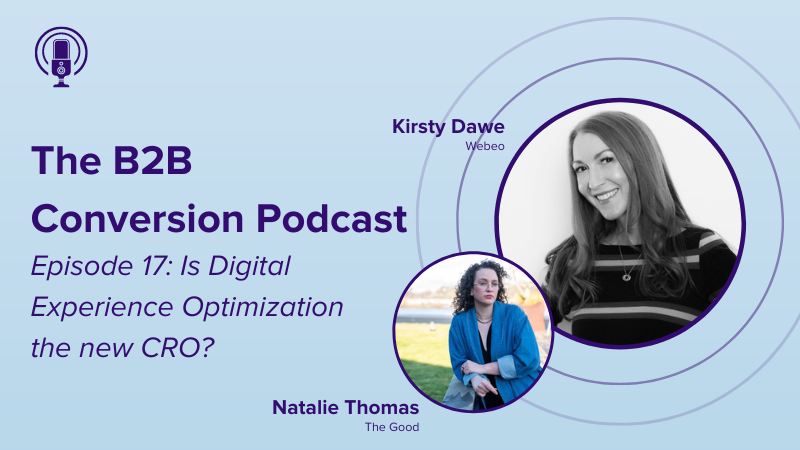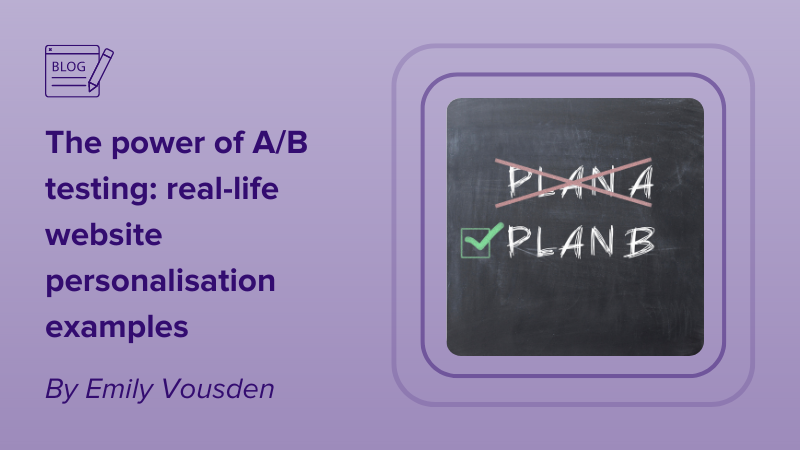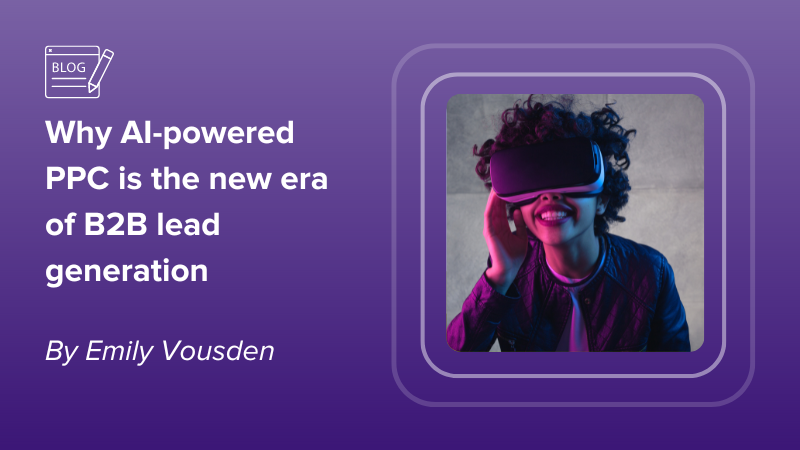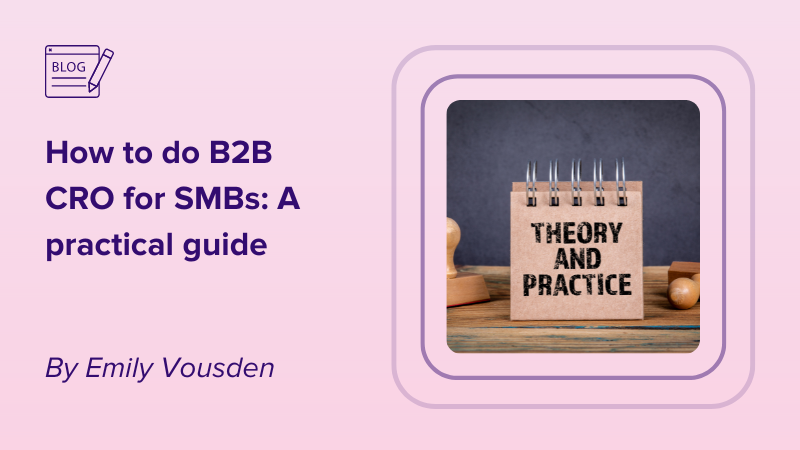Conversion rate optimization (CRO) is a vital aspect of B2B marketing strategies. It focuses on improving the percentage of website visitors or leads who take a desired action, such as making a purchase, filling out a form, or requesting a demo. To drive effective CRO, businesses need to leverage their B2B data to uncover valuable insights and generate hypotheses.
In this blog post, we’ll explore what we mean by a hypothesis and the process of turning B2B data into one, plus its significance in enhancing business growth and innovation.
First off, a hypothesis is a proposed explanation or statement that suggests a possible relationship between variables or events. It serves as a starting point for scientific research or investigation, aiming to explain a phenomenon or predict an outcome. In this instance, we’re talking about a hypothesis based on data available to a business and how you would take that insight to make strategic decisions.
1. Collecting and Analyzing B2B Data
To initiate the process, businesses need to gather relevant B2B data related to their website, marketing campaigns, and sales funnel. This includes information on website traffic, visitor behavior, landing page performance, conversion funnels, and customer interactions. By utilizing web analytics tools like Google Analytics, CRM systems, marketing automation platforms, and other tools in the tech stack like Hotjar, businesses can collect and analyze the data to gain valuable insights.
2. Identifying Conversion Roadblocks
Then, businesses need to analyze the collected B2B data to identify potential roadblocks or areas of improvement in the conversion process. Look for patterns, drop-off points, or bottlenecks that hinder stop prospects from completing the desired action on your site. For example, high bounce rates on specific pages, low engagement with certain content, or a significant drop in conversions at a particular stage of the sales funnel. These insights help pinpoint where optimization efforts should be focused. It’s always recommended to start wide, where the low-hanging fruit is, as improving these high-volume areas first enables you to make the most impact.
3. Formulating Research Questions
Once conversion roadblocks are identified, formulate research questions that address these specific challenges. Research questions should be based on the data analysis and should align with the company’s conversion objectives. For example, “Does simplifying the checkout process lead to higher conversion rates?” or “What impact does personalized content have on lead generation?”
4. Generating Hypotheses
Using the research questions as a guide, generate hypotheses that propose potential solutions or explanations for improving conversion rates. Hypotheses should be specific, measurable, and actionable. They can be derived from previous research, industry best practices, or innovative ideas based on the available data. For instance, “Shortening the contact forms from six fields to three will increase the conversion rate by 15%,” or “Tailoring page content based on buyer personas will lead to a 20% increase in lead generation.”
5. Designing Experiments and AB Tests
To test the hypotheses, design experiments or AB tests that allow for a controlled comparison between the current setup and the proposed changes. Determine the variables to be tested, such as the messaging, imagery, or calls-to-action. Split the traffic or leads into different groups and present each group with a different version of the website, page, or form. This allows for the measurement of the impact of the changes on the conversion rates. In Webeo you can do this using the Experimentation function, which will automatically split-test your campaign audience at percentages chosen by you.
6. Analyzing Results and Drawing Insights
Collect data from the experiments and analyze the results to draw meaningful insights. Compare the conversion rates, engagement metrics, and other relevant data between the control group and the experimental group. Once you’ve reached statistical significance with your data, where the test shows reliable data supporting the changes have a significant impact on the desired actions, you can identify which hypotheses were supported and which ones require further refinement or testing.
7. Iterating and Implementing Optimizations
Iterate the process by refining the hypotheses based on the analysis and insights gained. Implement successful optimizations across the website or marketing campaigns to maximize conversions. Monitor the impact of the changes over time and continue to gather data for ongoing analysis and further optimization efforts.
To summarize, turning B2B data into hypotheses for conversion rate optimization is a data-driven approach that empowers businesses to unlock the potential for improving conversion rates and driving revenue growth and is a reliable, strategic approach to improving return on investment from your website and the channels driving traffic there.




